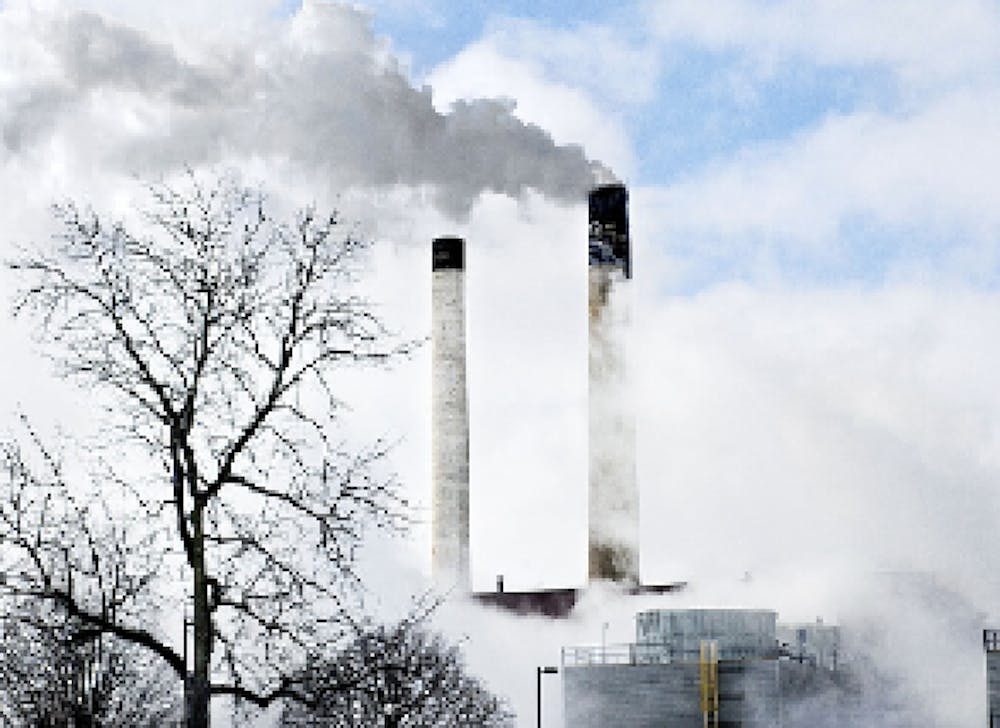Two sociologists working at Boston College recently discovered that carbon emissions exhibit a trend of being higher in states where there is a more concentrated high-income population. On a larger scale, this trend is consistent with the positive correlation between national wealth and carbon emission levels.
Andrew Jorgenson and Juliet Schor, the two who conducted the study, are the first researchers to directly carry out an investigation that examines the relationship between wealth concentration and carbon emissions with each individual U.S. state.
More specifically, Jorgenson and Schor found that between the years 1997 and 2012, each U.S. state’s accumulated carbon emission amount is directly proportional to the income level of the top 10 percent of its population. Their study was subsequently published in the April edition of the journal Ecological Economics.
Using state data collected in 2012 and statistical evidence provided by the researchers’ studies, it is estimated that a one percent increase in the income share amongst the top 10 percent of a state’s population culminates in significantly more metric tons of carbon emission.
This trend is consistent across the board for the majority of the U.S. states. For example, the study showed that the income share growth of Texas’ top 10 percent is 812,325, while Texas’ annual carbon emission level reaches a number of 934,174 metric tons.
On the other hand, the income share growth the top 10 percent of New York City elites is 196,234, while New York’s annual carbon emission level is 225,670 metric tons.
The study reveals that South Carolina sits at the median range with respect to the analysis of income growth and carbon emissions. At the other end of the spectrum, the District of Columbia has the lowest growth in carbon emissions.
The cornerstone of the study relies on its abundant statistical support. Jorgenson’s and Schor’s findings also made the general U.S. public aware of the impact of greenhouse gas and the urgent necessity of environmental action.
Jerry Brown, the governor of California, recently stated in a press release that his state would uphold its environmental friendly policies regardless of any federal deregulation that might be imposed in the future.
“We think it is safe to say, in terms of environmental policy and action, it is going to be much more active at the state level than the federal level,” Jorgenson said in a press release. “Given the uncertainty of the regulatory environment at the federal level, states like California are saying they will not move away from their policies even if the federal agenda on climate change makes a 180-degree turn from the prior administration.”
Jorgenson and Schor are both professors of sociology at Boston College. Schor also added that wealth is one of the most powerful driving forces behind carbon emission.
“First, income concentration leads to concentrated political power and the ability to prevent regulations on carbon emissions. Second, high income consumers are disproportionate carbon polluters,” Schor said.
Jorgenson and Schor originally used a statistical method known as the Gini coefficient in order to measure income inequality.
However, an issue with the Gini coefficient is that it only reports the presence of inequality without giving any specific details.
As a result, the researchers decided to switch to a measure that relies on evaluating the top 10 percent of a state’s population income.
Nonetheless, there were more factors to consider than merely income. For example, a state’s population size, gross domestic product per capita and fossil fuel production all need to be taken into consideration when discussing the cause of carbon emission.
Jorgenson said part of their research goal is to broaden the perspectives of the harmful effects of income inequality.
Therefore, equalizing incomes is now a more urgent goal for the nation because it might render positive outcomes that benefit the environment.





